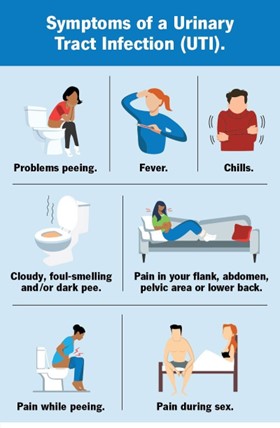A nurse is assisting with monitoring a client who is receiving a unit of packed RBCs. Which of the following findings indicates the client is experiencing a hemolytic transfusion reaction?
Temperature 38.8° C (101.8° F)
Straw-colored urine
Apical pulse rate 58/min
Blood pressure 158/92 mm Hg
The Correct Answer is A
The correct answer is: a. Temperature 38.8° C (101.8° F)
Title: Choice A reason: A temperature of 38.8° C (101.8° F) is indicative of a fever, which is a common symptom of a hemolytic transfusion reaction. During such a reaction, the immune system attacks the transfused red blood cells, leading to their destruction and the release of substances that can cause a rise in body temperature.
Title: Choice B reason: Straw-colored urine is not typically associated with a hemolytic transfusion reaction. Hemolytic reactions often result in darker urine due to the presence of free hemoglobin released from destroyed red blood cells.
Title: Choice C reason: An apical pulse rate of 58/min is considered bradycardia if it is lower than the normal resting heart rate for adults, which ranges from 60 to 100 beats per minute. Bradycardia is not a direct indicator of a hemolytic transfusion reaction.
Title: Choice D reason: Elevated blood pressure, such as 158/92 mm Hg, can be a sign of various conditions but is not a specific indicator of a hemolytic transfusion reaction. The symptoms of such a reaction are more directly related to the destruction of red blood cells and the body’s response to it.
Nursing Test Bank
Naxlex Comprehensive Predictor Exams
Related Questions
Correct Answer is ["A","D","E","F"]
Explanation
To decrease the risks of a urinary tract infection for this client, the nurse should take several actions. The nurse should encourage the client to drink 3,000 mL of fluid daily to help flush bacteria out of the urinary tract¹. The nurse should also empty the drainage bag when it is half-full to prevent bacterial growth¹.
Additionally, the nurse should review the need for the indwelling urinary catheter daily and use soap and water to provide perineal care¹.

Correct Answer is D
Explanation
A. Maintain low-level lights in common areas.Low-level lighting can increase confusion and the risk of falls, especially for clients with memory loss. It is important to have adequate lighting to promote a safe environment and help with orientation. Well-lit areas can reduce disorientation and anxiety in clients who are confused or have memory issues.
B. Give the client several meal options at lunchtime. For clients with memory loss and confusion, it is better to provide simple choices or pre-selected meals to reduce decision-making stress and confusion.
C. Confront the client regarding inappropriate behavior.Confronting a client with memory loss or confusion about inappropriate behavior can increase agitation, anxiety, and defensive reactions.
D. Use symbols in the communal room signage.Symbols and pictures can help clients with memory loss navigate their environment more easily because they may have difficulty reading or comprehending written language. Visual cues such as symbols in signage can improve orientation and independence, helping the client feel more comfortable in their surroundings.
Whether you are a student looking to ace your exams or a practicing nurse seeking to enhance your expertise , our nursing education contents will empower you with the confidence and competence to make a difference in the lives of patients and become a respected leader in the healthcare field.
Visit Naxlex, invest in your future and unlock endless possibilities with our unparalleled nursing education contents today
Report Wrong Answer on the Current Question
Do you disagree with the answer? If yes, what is your expected answer? Explain.
Kindly be descriptive with the issue you are facing.
